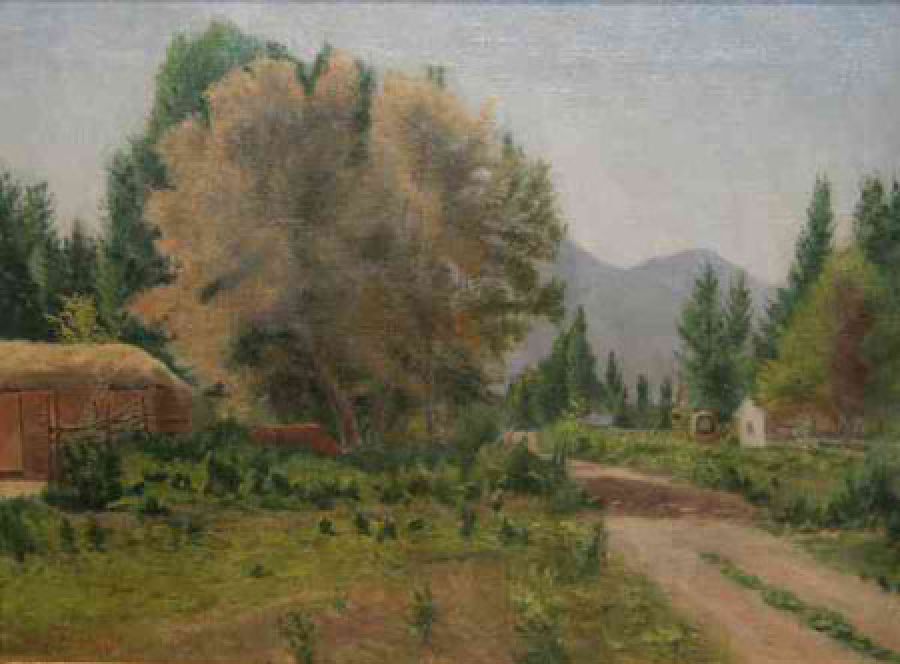Difference between revisions of "John Fairbanks: Mormon Artist"
| Line 1: | Line 1: | ||
[[Image:John_Fairbanks.jpg|300px|thumb|alt=John Fairbanks Mormon Artist|left]] | [[Image:John_Fairbanks.jpg|300px|thumb|alt=John Fairbanks Mormon Artist|left]] | ||
| − | Latter-day Saint artists [[John Hafen]] and [[Lorus Pratt]], yearning to contribute to the beautification of their home in the valleys of the Rocky Mountains, asked the leadership of [http:// | + | Latter-day Saint artists [[John Hafen]] and [[Lorus Pratt]], yearning to contribute to the beautification of their home in the valleys of the Rocky Mountains, asked the leadership of [http://comeuntochrist.org The Church of Jesus Christ of Latter-day Saints] for financial assistance to travel to Paris to receive the training they knew they needed. In exchange for their training, they would paint murals in the temples and provide any other art services the Church may need. In June 1890, President [[George Q. Cannon]] told them their proposal had been accepted. |
'''John B. Fairbanks''' was one of the five artists who were set apart as art missionaries and sent to study in Paris. Fairbanks, Hafen, and Pratt were sent first, with [[Edwin Evans]] and [[Herman Haag]] joining them later. They studied at the Academie Julian. Despite the challenges of frugal living arrangements and instruction in a crowded art academy, the Utah artists distinguished themselves and won several competitions. Their Paris training produced artists who gained new techniques and greater sophistication and accuracy in perspective and proportions. They were influenced by French Impressionism and its emphasis on landscapes and the effects of natural light by painting en plein air. | '''John B. Fairbanks''' was one of the five artists who were set apart as art missionaries and sent to study in Paris. Fairbanks, Hafen, and Pratt were sent first, with [[Edwin Evans]] and [[Herman Haag]] joining them later. They studied at the Academie Julian. Despite the challenges of frugal living arrangements and instruction in a crowded art academy, the Utah artists distinguished themselves and won several competitions. Their Paris training produced artists who gained new techniques and greater sophistication and accuracy in perspective and proportions. They were influenced by French Impressionism and its emphasis on landscapes and the effects of natural light by painting en plein air. | ||
| Line 14: | Line 14: | ||
[[Category:Mormon Life and Culture]][[Category:Famous Mormons]] | [[Category:Mormon Life and Culture]][[Category:Famous Mormons]] | ||
| + | {{DEFAULTSORT:Fairbanks, John}} | ||
Latest revision as of 14:01, 31 July 2021
Latter-day Saint artists John Hafen and Lorus Pratt, yearning to contribute to the beautification of their home in the valleys of the Rocky Mountains, asked the leadership of The Church of Jesus Christ of Latter-day Saints for financial assistance to travel to Paris to receive the training they knew they needed. In exchange for their training, they would paint murals in the temples and provide any other art services the Church may need. In June 1890, President George Q. Cannon told them their proposal had been accepted.
John B. Fairbanks was one of the five artists who were set apart as art missionaries and sent to study in Paris. Fairbanks, Hafen, and Pratt were sent first, with Edwin Evans and Herman Haag joining them later. They studied at the Academie Julian. Despite the challenges of frugal living arrangements and instruction in a crowded art academy, the Utah artists distinguished themselves and won several competitions. Their Paris training produced artists who gained new techniques and greater sophistication and accuracy in perspective and proportions. They were influenced by French Impressionism and its emphasis on landscapes and the effects of natural light by painting en plein air.
After assisting in creating the murals in the Salt Lake Temple and the Church administration building, He traveled to Arizona and assisted with the murals in the Mesa Arizona Temple. Fairbanks became the first supervisor of arts in the public schools in Ogden. He was well known for his landscapes and portraits of state figures such as George Q. Cannon and Heber J. Grant. His paintings of early Utah life were either ignored or lightly praised during his lifetime.
Fairbanks was born on December 27, 1855, in Payson, Utah. He served a full-time mission in the Southern States Mission. He married Lillie Huish and they had seven children. She died after falling down stairs. Fairbanks left his children in the care of his oldest son, Leo, to go on Benjamin Cluff’s archaeology expedition to Latin America where he was to sketch and photograph the group’s travels. After the group disbanded, Fairbanks stayed to travel and sketch the landscapes. He returned in 1902.
After his return, he married Florence Gifford and together they had five children. Several of his children, including sculptor Avard Fairbanks, were skilled artists. He spent the last fifteen years of his life in New York City where he served as a Church Patriarch. He died on June 15, 1940 at the age of 85.

